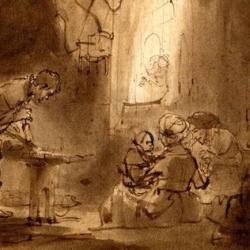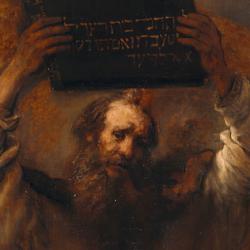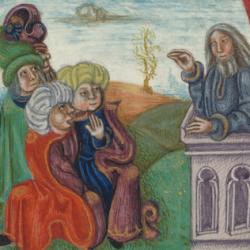The Bible first mentions pomegranates in connection with the priestly garments of glory and beauty. Bells and pomegranates alternate along the hem of the priest’s robe (Exodus 28:33-34; 29:24-26), the bells sounding to “warn” Yahweh of the priest’s approach. In the temple, this gets picks up in the pomegranate chains that adorn the two pillars at the front of the temple. The pillars are priestly pillars, pomegranate trees.
Pomegranates are also associated with the land. The spies bring back grapes, figs, and pomegranates (Numbers 13:23), and the people complain that Moses has not taken them to a land of pomegranates (Numbers 20:5).
Given that the priest’s approach to the Most Holy Place is an approach to the throne of Yahweh, and symbolically to the land of Eden, it is appropriate that the priest be decorated with pomegranates. Aaron is a pomegranate tree, flourishing and bearing fruit in the house and land of Yahweh. So is Christ, and so, in Christ, are we.










